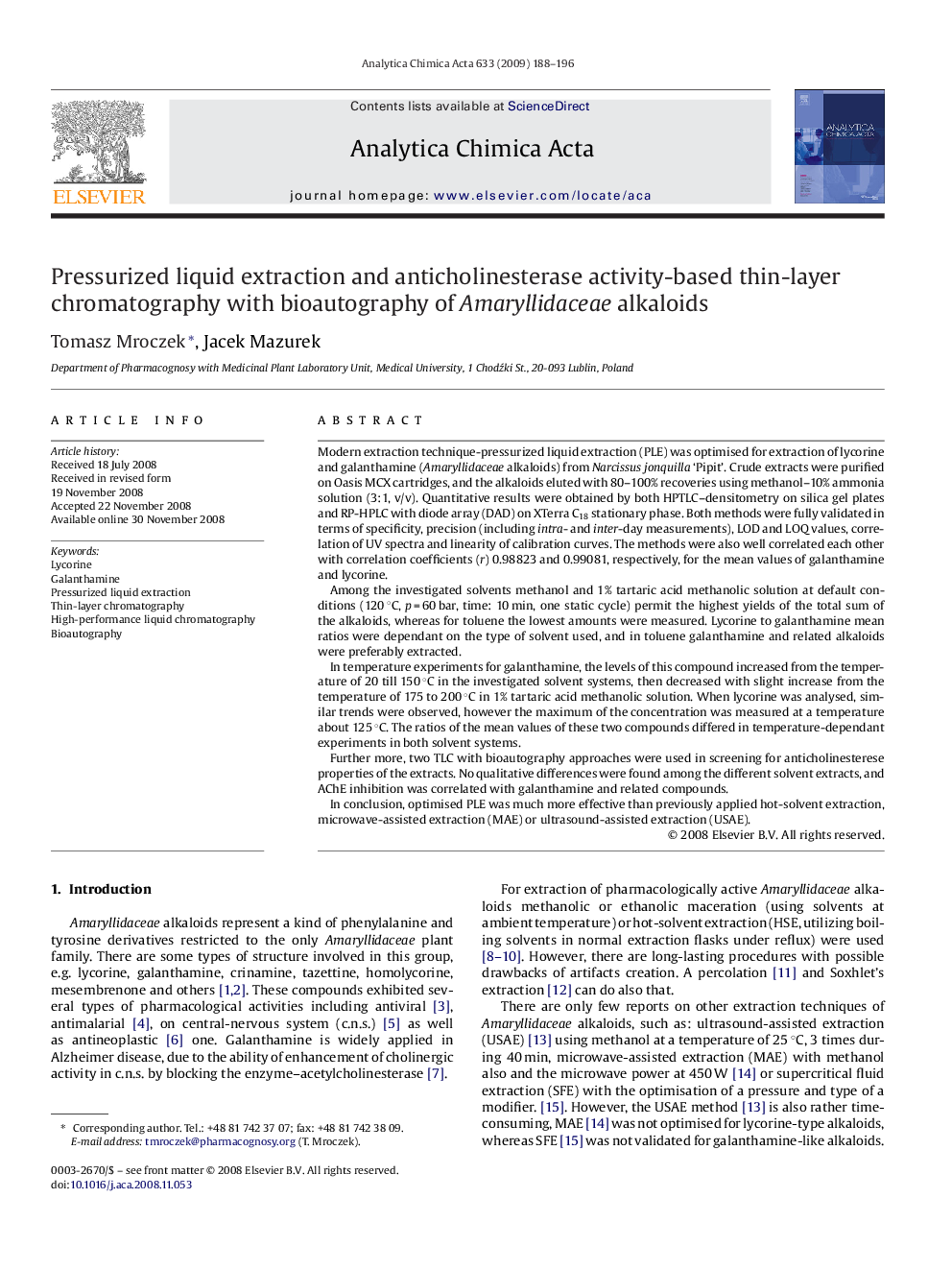| Article ID | Journal | Published Year | Pages | File Type |
|---|---|---|---|---|
| 1168247 | Analytica Chimica Acta | 2009 | 9 Pages |
Modern extraction technique-pressurized liquid extraction (PLE) was optimised for extraction of lycorine and galanthamine (Amaryllidaceae alkaloids) from Narcissus jonquilla ‘Pipit’. Crude extracts were purified on Oasis MCX cartridges, and the alkaloids eluted with 80–100% recoveries using methanol–10% ammonia solution (3:1, v/v). Quantitative results were obtained by both HPTLC–densitometry on silica gel plates and RP-HPLC with diode array (DAD) on XTerra C18 stationary phase. Both methods were fully validated in terms of specificity, precision (including intra- and inter-day measurements), LOD and LOQ values, correlation of UV spectra and linearity of calibration curves. The methods were also well correlated each other with correlation coefficients (r) 0.98823 and 0.99081, respectively, for the mean values of galanthamine and lycorine.Among the investigated solvents methanol and 1% tartaric acid methanolic solution at default conditions (120 °C, p = 60 bar, time: 10 min, one static cycle) permit the highest yields of the total sum of the alkaloids, whereas for toluene the lowest amounts were measured. Lycorine to galanthamine mean ratios were dependant on the type of solvent used, and in toluene galanthamine and related alkaloids were preferably extracted.In temperature experiments for galanthamine, the levels of this compound increased from the temperature of 20 till 150 °C in the investigated solvent systems, then decreased with slight increase from the temperature of 175 to 200 °C in 1% tartaric acid methanolic solution. When lycorine was analysed, similar trends were observed, however the maximum of the concentration was measured at a temperature about 125 °C. The ratios of the mean values of these two compounds differed in temperature-dependant experiments in both solvent systems.Further more, two TLC with bioautography approaches were used in screening for anticholinesterese properties of the extracts. No qualitative differences were found among the different solvent extracts, and AChE inhibition was correlated with galanthamine and related compounds.In conclusion, optimised PLE was much more effective than previously applied hot-solvent extraction, microwave-assisted extraction (MAE) or ultrasound-assisted extraction (USAE).
